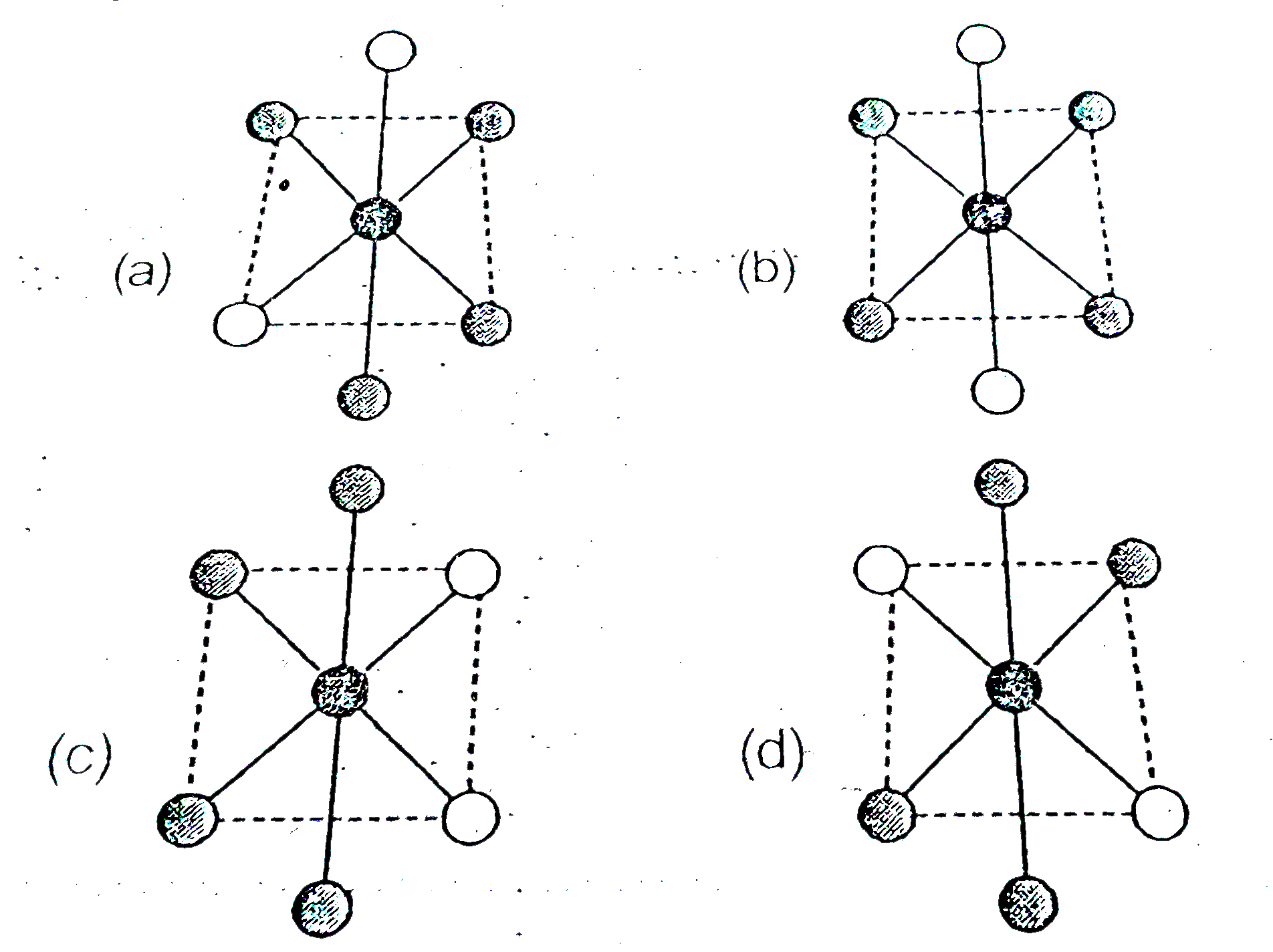Which of the following will have a trans isomer?




The correct Answer is:B, C, D
To determine which of the given compounds will have a trans isomer, we need to understand the concept of geometrical isomerism, specifically cis and trans isomerism. Here’s a step-by-step solution:
Step 1: Understand Geometrical Isomerism
Geometrical isomerism occurs in compounds with restricted rotation around a double bond or in cyclic structures. The two types of geometrical isomers are:
- Cis Isomer: Similar groups are on the same side of the double bond or ring.
- Trans Isomer: Similar groups are on opposite sides of the double bond or ring.
Step 2: Identify the Compounds
Let’s analyze the compounds provided in the question (assuming they are given as options). We will determine if each compound can exhibit trans isomerism.
Step 3: Analyze Each Compound
1. Compound 1: CH3-C=C-CH3 (with H on one side)
- This compound can have a trans isomer because the two CH3 groups can be on opposite sides of the double bond.
- Conclusion: This compound exhibits trans isomerism.
2. Compound 2: Cl-C=C-Cl
- In this case, the two chlorine atoms can be on opposite sides of the double bond, allowing for a trans configuration.
- Conclusion: This compound exhibits trans isomerism.
3. Compound 3: Cyclohexane with two methyl groups
- If the methyl groups are positioned on opposite sides of the cyclohexane ring, this configuration represents a trans isomer.
- Conclusion: This compound exhibits trans isomerism.
4. Compound 4: A compound with two identical substituents on one side of the double bond (e.g., H-C=C-H)
- Since both substituents are identical, it cannot exhibit geometrical isomerism.
- Conclusion: This compound does not exhibit trans isomerism.
Step 4: Final Answer
Based on the analysis, the compounds that exhibit trans isomerism are:
- Compound 1
- Compound 2
- Compound 3
Thus, the correct answer is that options 2, 3, and 4 will have a trans isomer.
---
Geometrical isomerism occurs in compounds with restricted rotation around a double bond or in cyclic structures. The two types of geometrical isomers are:
- Cis Isomer: Similar groups are on the same side of the double bond or ring.
- Trans Isomer: Similar groups are on opposite sides of the double bond or ring.
Let’s analyze the compounds provided in the question (assuming they are given as options). We will determine if each compound can exhibit trans isomerism.
1. Compound 1: CH3-C=C-CH3 (with H on one side)
- This compound can have a trans isomer because the two CH3 groups can be on opposite sides of the double bond.
- Conclusion: This compound exhibits trans isomerism.
- In this case, the two chlorine atoms can be on opposite sides of the double bond, allowing for a trans configuration.
- Conclusion: This compound exhibits trans isomerism.
- If the methyl groups are positioned on opposite sides of the cyclohexane ring, this configuration represents a trans isomer.
- Conclusion: This compound exhibits trans isomerism.
- Since both substituents are identical, it cannot exhibit geometrical isomerism.
- Conclusion: This compound does not exhibit trans isomerism.
Based on the analysis, the compounds that exhibit trans isomerism are:
- Compound 1
- Compound 2
- Compound 3
Similar Questions
Knowledge Check
Which of the following will form geometrical isomers?
A BCH3CH=NOHC
BCH3CH=NOHC Dall of these
Dall of these
Consider the following isomers of [Co(NH3)4Br2]+ . The black sphere represent Co, grey spheres represent NH3 and unshaded spheres represent Br.

Which of the following are trans-isomers ?
View SolutionWhich of the following pair are chain isomer?
View SolutionWhich of the following has an optical isomer?
View SolutionWhich of the following will give maximum number of isomer ?
View SolutionWhich of the following are isomers ?
View SolutionWhich one of the following will be able to show cis-trans isomerism ?
View SolutionWhich of the following shows geometrical isomers ?
View Solution